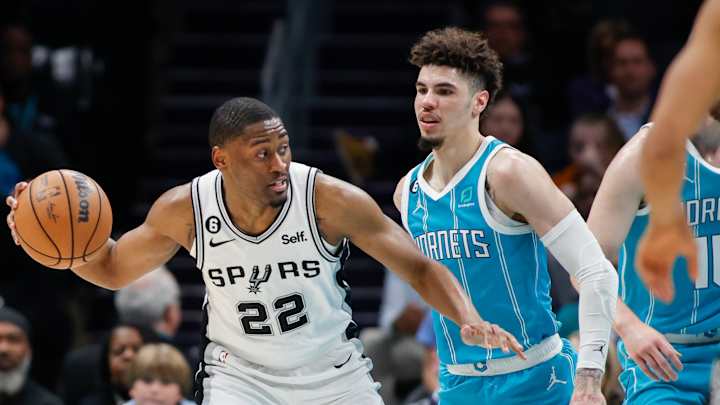'We Won't!' How Spurs' Attempt to Break Up Passing Lanes Lead to 30 Losses

In this story:
The San Antonio Spurs are hoping for a change of tide after losing to the Cleveland Cavaliers and falling to 5-30.
Before they travel to Michigan to take on the lowly Detroit Pistons, there are several adjustments they need to make, but one that has often gone under the radar.
The Spurs celebrate that the traditional San Antonio ball movement appears to be retained, even through a rebuild. The championship-era Spurs were praised for their “beautiful game” that was consistently among the league leaders in assists. This season, the Spurs are fourth in assists with 28.9 per game, despite being near the bottom in points scored and field goal percentage.
It’s safe to say that the Spurs could rank even higher in assists if they just made shots, but that’s not the issue of concern. The Spurs also allow the fourth-most assists in the league, giving up 28.1 per game.
Before the most recent loss, coach Gregg Popovich was asked how the Spurs would break up passing lanes and prevent assists.
“We probably won’t,” he said. “I can give you some b***s*** if you want.”
The Spurs’ defense is a reflection of their offense. While Keldon Johnson, Jeremy Sochan, Malaki Branham, and Devin Vassell are talented, they tend to get tunnel vision on offense. When they decide to put their head down and drive, they are unlikely to find Victor Wembanyama or kick the ball out to a shooter. Tre Jones is not guilty of that, and he does a great job of breaking up passes or preventing open looks.
When Will Wembanyama Become an All-Star?
Unfortunately, watching the Spurs play is often reminiscent of youth basketball at the Boys and Girls Club: once someone takes a dribble or two inside the three-point line, that is the person who will shoot the ball, regardless of how many open teammates he has. This translates to defense, where the Spurs tend to swarm opponents and collapse into the paint, leaving multiple shooters open. The Spurs give up the second-best three-point percentage in the league, and they give up the most makes from a distance. Most of those shots are assisted.
The Spurs are a young team, but they have offensive talent. Vassell, Sochan, and Johnson are all legitimate shooters, and Jones is a solid distributor. Wembanyama is an emerging superstar, but the Spurs do not play preventative defense and often have to claw their way out of holes they dug.

Jonah Kubicek has been writing about the NBA since 2021, covering the Pistons, Jazz, Spurs, Magic, Rockets, and Knicks. As a lifelong Spurs fan living in Michigan, he never misses an opportunity to bring up the 2005 NBA Finals (you should have guarded Horry!). He is a long-suffering Tigers fan and closely follows the NFL, although he never found an affinity for the Lions. Jonah graduated from Oakland University with a degree in History and spends his spare time playing tennis or reading. Follow Jonah on Twitter for updates on Tre Jones and other NBA news.
Follow JonahKubicek